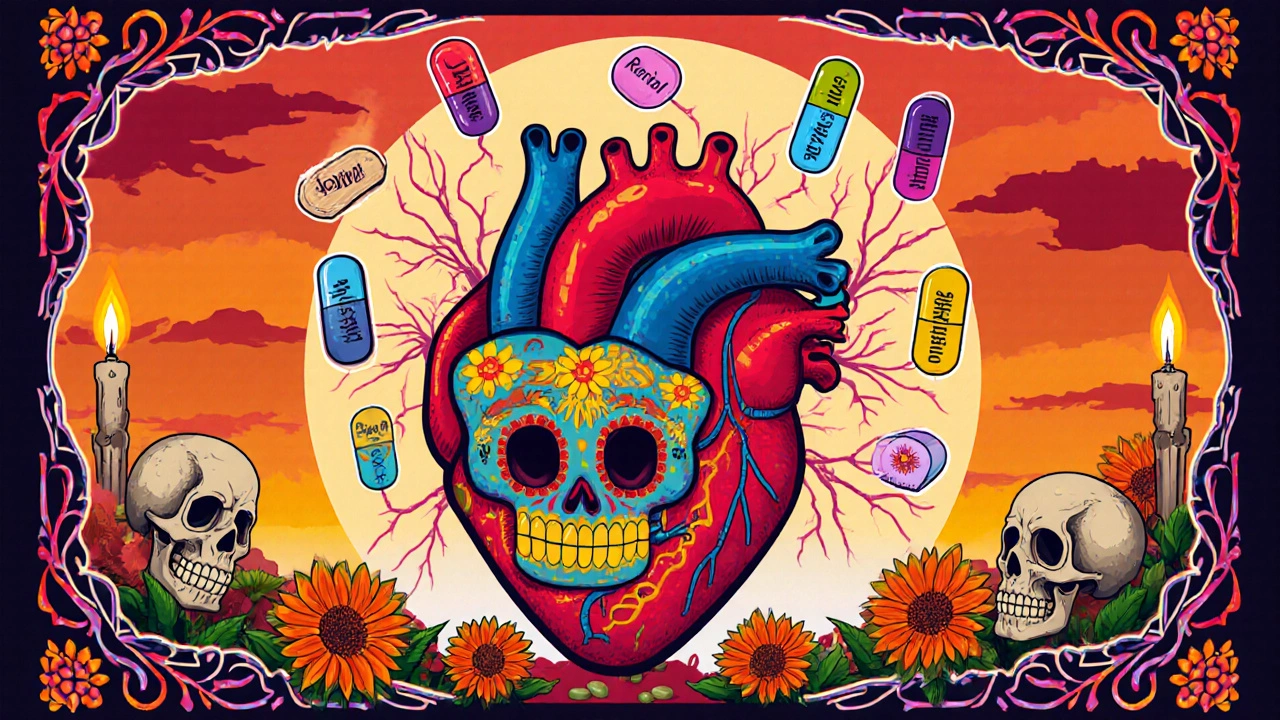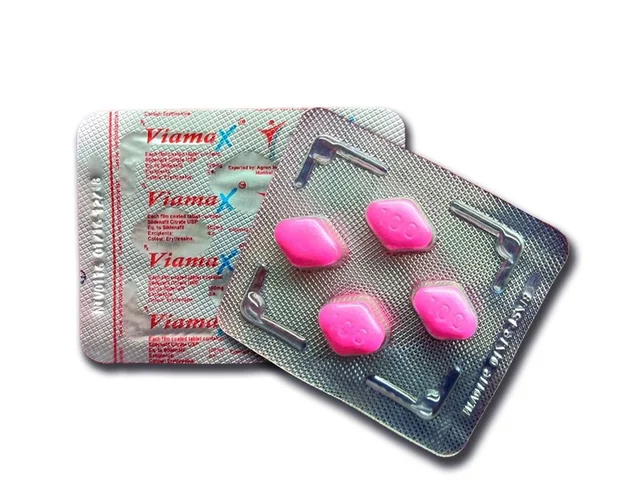
Compare Ranol SR (Propranolol) with Alternatives: What Works Best for You
Medication Match: Find Your Best Beta Blocker Alternative
Let's find your best medication match
Answer a few questions about your condition, symptoms, and health profile to get personalized recommendations
How This Works
Answer the questions above about your condition and needs. We'll compare your situation to the medications discussed in the article to give you personalized recommendations.
Your Personalized Medication Recommendations
Recommended Alternatives
Key Considerations
Your Profile Summary
Next Steps
- Discuss these options with your doctor
- Bring this information to your next appointment
- Track your symptoms for 2 weeks after switching
If you’ve been prescribed Ranol SR - the extended-release form of propranolol - you’re likely managing high blood pressure, angina, or an irregular heartbeat. But maybe you’re experiencing side effects like fatigue, dizziness, or cold hands. Or perhaps your doctor suggested switching, and now you’re wondering: What else is out there? This isn’t about finding the ‘best’ drug. It’s about finding the right one for you.
What Ranol SR (Propranolol) Actually Does
Ranol SR is a brand name for propranolol hydrochloride in a slow-release tablet. It’s a beta blocker, meaning it blocks adrenaline’s effects on your heart and blood vessels. That slows your heart rate, lowers blood pressure, and reduces how hard your heart works. It’s been around since the 1960s and is still used because it works - especially for conditions like:
- High blood pressure (hypertension)
- Chest pain (angina)
- Irregular heart rhythms (like atrial fibrillation)
- Migraine prevention
- Severe anxiety or tremors
But propranolol isn’t perfect. Many people report tiredness, weight gain, or trouble sleeping. Some notice their hands get cold or they feel lightheaded when standing up. And if you have asthma or certain types of heart block, it’s not safe at all.
Top Alternatives to Ranol SR
There are several other beta blockers - and even non-beta blocker options - that your doctor might consider. Here’s how they stack up.
1. Atenolol (Tenormin)
Atenolol is another beta blocker, but it’s more selective. It mainly targets the heart, not the lungs or blood vessels as much as propranolol does. That makes it a better choice if you have asthma or COPD. It’s also once-daily, like Ranol SR, so it’s easy to stick with.
But it doesn’t help with migraines or anxiety as well as propranolol. If those are your main concerns, switching to atenolol might leave you feeling like something’s missing.
2. Metoprolol Succinate (Toprol XL)
Metoprolol succinate is the long-acting form of metoprolol, and it’s one of the most common alternatives to Ranol SR. Like propranolol, it’s used for high blood pressure, heart failure, and after heart attacks. But it’s more heart-specific, so fewer side effects in the lungs and limbs.
Studies show metoprolol succinate lowers blood pressure just as well as propranolol, but with less fatigue reported in clinical trials. It’s also preferred for heart failure patients - something propranolol isn’t typically first-line for.
3. Bisoprolol (Zebeta)
Bisoprolol is the most selective beta blocker available in the U.S. It’s gentle on the lungs and rarely causes cold hands or fatigue. It’s often used in older adults or people with mild asthma because of its safety profile.
It’s once-daily, just like Ranol SR. But it doesn’t help with migraines or tremors. If those are why you’re on propranolol, bisoprolol won’t replace that benefit.
4. Carvedilol (Coreg)
Carvedilol is different. It’s a beta blocker and an alpha blocker. That means it not only slows your heart but also widens your blood vessels. It’s especially effective for heart failure and high blood pressure.
Compared to propranolol, carvedilol has better outcomes in people with weakened hearts. But it can cause more dizziness and low blood pressure, especially when you first start. It’s also twice-daily dosing, which might be less convenient.
5. Non-Beta Blocker Options: ACE Inhibitors and Calcium Channel Blockers
You don’t have to stick with beta blockers. If side effects are a problem, your doctor might try a different class of drugs.
- ACE inhibitors like lisinopril or enalapril: These relax blood vessels by blocking a hormone that narrows them. They’re often first-choice for high blood pressure, especially if you have diabetes. Side effects include a dry cough in about 20% of users.
- Calcium channel blockers like amlodipine or diltiazem: These relax blood vessels and reduce heart strain. Amlodipine is once-daily and rarely causes fatigue. It’s great for older adults and people with angina.
These drugs don’t help with migraines or anxiety like propranolol does. But if your only goal is lowering blood pressure, they’re often better tolerated.
Comparison Table: Ranol SR vs. Top Alternatives
| Medication | Brand Name | Dosing | Best For | Key Side Effects | Not Ideal If You Have |
|---|---|---|---|---|---|
| Propranolol | Ranol SR | Once daily | High blood pressure, angina, migraines, anxiety, tremors | Fatigue, cold hands, sleep issues, weight gain | Asthma, severe heart block, depression |
| Atenolol | Tenormin | Once daily | High blood pressure, heart rhythm | Dizziness, slow heart rate | Asthma (less risk than propranolol) |
| Metoprolol Succinate | Toprol XL | Once daily | High blood pressure, heart failure, post-heart attack | Fatigue (less than propranolol), dizziness | Severe liver disease |
| Bisoprolol | Zebeta | Once daily | High blood pressure, older adults | Headache, mild fatigue | Severe asthma, heart block |
| Carvedilol | Coreg | Twice daily | Heart failure, high blood pressure | Dizziness, low blood pressure, swelling | Liver disease, low blood pressure |
| Amlodipine | Amlodipine | Once daily | High blood pressure, angina | Swelling in ankles, flushing, dizziness | Low blood pressure, liver disease |
| Lisinopril | Lisinopril | Once daily | High blood pressure, diabetes, heart failure | Dry cough, high potassium, dizziness | Pregnancy, kidney failure |
Which Alternative Is Right for You?
There’s no one-size-fits-all answer. Your choice depends on what you’re treating and what you can tolerate.
- If migraines or anxiety are your main reason - stick with propranolol unless side effects are unbearable. Atenolol and bisoprolol won’t help here.
- If you have asthma or COPD - atenolol, bisoprolol, or metoprolol are safer than propranolol.
- If you’re over 65 - bisoprolol or amlodipine are often preferred for fewer side effects.
- If you’ve had a heart attack or have heart failure - metoprolol succinate or carvedilol are proven to save lives here.
- If you hate taking pills twice a day - avoid carvedilol. Stick with once-daily options.
- If you’re on a tight budget - generic propranolol and amlodipine are among the cheapest options.
What to Watch For When Switching
Never stop propranolol suddenly. If you’re switching, your doctor will taper you down slowly. Stopping abruptly can cause rebound high blood pressure, chest pain, or even a heart attack.
When starting a new drug, watch for:
- Unusual dizziness or fainting
- Swelling in your ankles or feet
- Shortness of breath that’s worse than before
- Heart rate below 50 bpm (unless you’re an athlete)
Keep a log of how you feel for the first two weeks. Note energy levels, sleep, and any new symptoms. Bring it to your follow-up.

When to Stick With Ranol SR
Even with side effects, propranolol might still be your best bet. If you’ve tried other beta blockers and they didn’t work - or if you’ve had success with it for years - switching might not be worth the risk. Many people adapt to side effects over time. A small dose adjustment or taking it at night can make a big difference.
Also, if you’ve used propranolol for migraines or performance anxiety and it works, alternatives often fall short. There’s no other beta blocker with the same broad effect on the nervous system.
Next Steps
Don’t switch on your own. Talk to your doctor and ask:
- What’s the main reason I’m on Ranol SR?
- Which side effect is most bothering me - and can we fix it without switching?
- What’s the evidence for the alternative you’re suggesting?
- Will I need blood tests or monitoring with the new drug?
Bring this article with you. It’s not a replacement for medical advice - but it’s a solid starting point for a smarter conversation.
Can I switch from Ranol SR to amlodipine for high blood pressure?
Yes, amlodipine is a common and effective alternative for high blood pressure. It’s less likely to cause fatigue or sleep problems than propranolol. But it won’t help with migraines, anxiety, or tremors. If those are part of why you’re on Ranol SR, switching to amlodipine might leave those symptoms untreated. Talk to your doctor about your full list of symptoms before switching.
Is metoprolol better than propranolol for heart health?
For heart failure or after a heart attack, yes - metoprolol succinate has stronger evidence for improving survival. Propranolol is still used for heart rhythm and blood pressure, but metoprolol is often preferred when heart function is weakened. If your goal is long-term heart protection, metoprolol is usually the better choice.
Do beta blockers cause weight gain?
Some beta blockers do - especially older ones like propranolol and atenolol. Studies show people can gain 1-3 pounds on average, mostly in the first few months. Newer ones like bisoprolol and carvedilol are less likely to cause weight gain. If weight gain is a concern, ask about switching to a different class like ACE inhibitors or calcium channel blockers.
Can I take Ranol SR with other medications?
Propranolol can interact with many drugs. Avoid combining it with other blood pressure meds without doctor approval, as it can cause dangerously low blood pressure. It also interacts with antidepressants, asthma inhalers, and some anti-inflammatory drugs. Always tell your pharmacist and doctor about everything you’re taking - including supplements and over-the-counter meds.
How long does it take for a new blood pressure med to work?
Most blood pressure medications take 2-4 weeks to reach full effect. Beta blockers like metoprolol or bisoprolol might lower your heart rate within days, but blood pressure takes longer. Don’t judge effectiveness after one week. Give it time, track your readings, and report changes to your doctor at your follow-up.
If you’ve been on Ranol SR for a while and it’s no longer working well, you’re not alone. Many people switch - and many find relief with alternatives. The key is knowing what you’re switching for - and what you might lose. Work with your doctor. Use this as a guide. And remember: the goal isn’t just to take a pill. It’s to feel better every day.







8 Comments
Matthew Kwiecinski November 1, 2025
Propranolol’s half-life is around 3-6 hours, but Ranol SR’s extended-release formulation extends that to 24 hours with steady plasma levels. That’s why it’s so effective for migraines and tremors - consistent receptor blockade. Atenolol’s renal clearance makes it less reliable in elderly patients with reduced GFR. Metoprolol succinate has better pharmacokinetic consistency than the tartrate form, which is why Toprol XL is preferred in heart failure guidelines. Don’t confuse beta-blocker selectivity with efficacy - bisoprolol may be cleaner, but propranolol crosses the blood-brain barrier, which is why it works for anxiety. No alternative does all that.
Jens Petersen November 3, 2025
Let’s be real - if you’re on propranolol for anxiety, you’re probably the type who overthinks everything anyway. Amlodipine? Please. That’s for people who think ‘beta blocker’ is a type of yoga pose. You want to feel like a human again? Stop chasing the myth of ‘fewer side effects’ and start accepting that medicine isn’t a smoothie bar. Propranolol gives you the grit you need - fatigue, cold hands, and all. If you can’t handle the side effects, maybe your life needs more adrenaline, not less. Stop whining and start living.
Dade Hughston November 4, 2025
so i switched to amlodipine last month and honestly my ankles are puffed up like balloon animals but my bp is perfect and i dont feel like a zombie anymore?? also my doctor said not to stop propranolol cold turkey but i did anyway and nothing happened??? like maybe its all in my head??
Brittney Lopez November 6, 2025
Thanks for laying this out so clearly. I’ve been on Ranol SR for migraines for 5 years and the fatigue was killing me. Switched to bisoprolol and the migraines came back worse - turns out propranolol’s CNS penetration really is unique. Ended up going back to it, but now I take it at night and added magnesium. My energy’s better and the cold hands? Still there, but I just wear gloves. Sometimes the best solution isn’t a new drug - it’s a tweak.
Keerthi Kumar November 6, 2025
In India, we often use metoprolol succinate as first-line for hypertension - it’s affordable, effective, and has less impact on lipid profiles than propranolol. But for anxiety-related palpitations? Propranolol is still the gold standard here too. Many patients report that while metoprolol calms the heart, it doesn’t quiet the mind. I’ve seen patients switch to carvedilol for heart failure, and while the dizziness is rough at first, the long-term improvement in ejection fraction is undeniable. Always remember: the body adapts, but so should the treatment plan - gently, with awareness.
Justin Vaughan November 8, 2025
Look, if you’re reading this because you’re tired of feeling like a ghost in your own body, I get it. I was there. Propranolol made me feel like I was walking through syrup. I switched to amlodipine - no fatigue, no brain fog, just a little ankle swelling. And guess what? My BP is better. But I still get the occasional migraine. So I started taking riboflavin and cutting out aged cheese. No magic pill. Just layers. Medication, lifestyle, patience. You’re not broken. You’re just figuring out what your body needs right now. And that’s okay. Keep going. You’ve got this.
Andy Ruff November 9, 2025
People act like switching meds is some kind of moral victory. Newsflash: if you’re on a beta blocker, you have a medical condition. You’re not ‘weak’ for wanting to feel better. But also - don’t be lazy. Don’t just swap drugs because you hate the side effects. Do the work. Track your BP. Note your sleep. Journal your anxiety spikes. If you’re going to switch, do it with data, not whim. And for god’s sake, don’t stop cold turkey. That’s not bravery - that’s stupidity. You think your doctor’s just handing out pills like candy? They’re trying to keep you alive. Show them you’re worth the effort.
Manuel Gonzalez November 10, 2025
Just want to add - if you're on propranolol for performance anxiety, and it works, don't fix what isn't broken. I use it before public speaking. Nothing else touches it. I tried atenolol, bisoprolol, even gabapentin. Nothing gave me that calm focus. The fatigue? I just sleep more. The cold hands? I carry hand warmers. Sometimes the trade-off is worth it. You're not choosing between perfect and imperfect - you're choosing between functional and dysfunctional. And propranolol? For me, it's still functional.